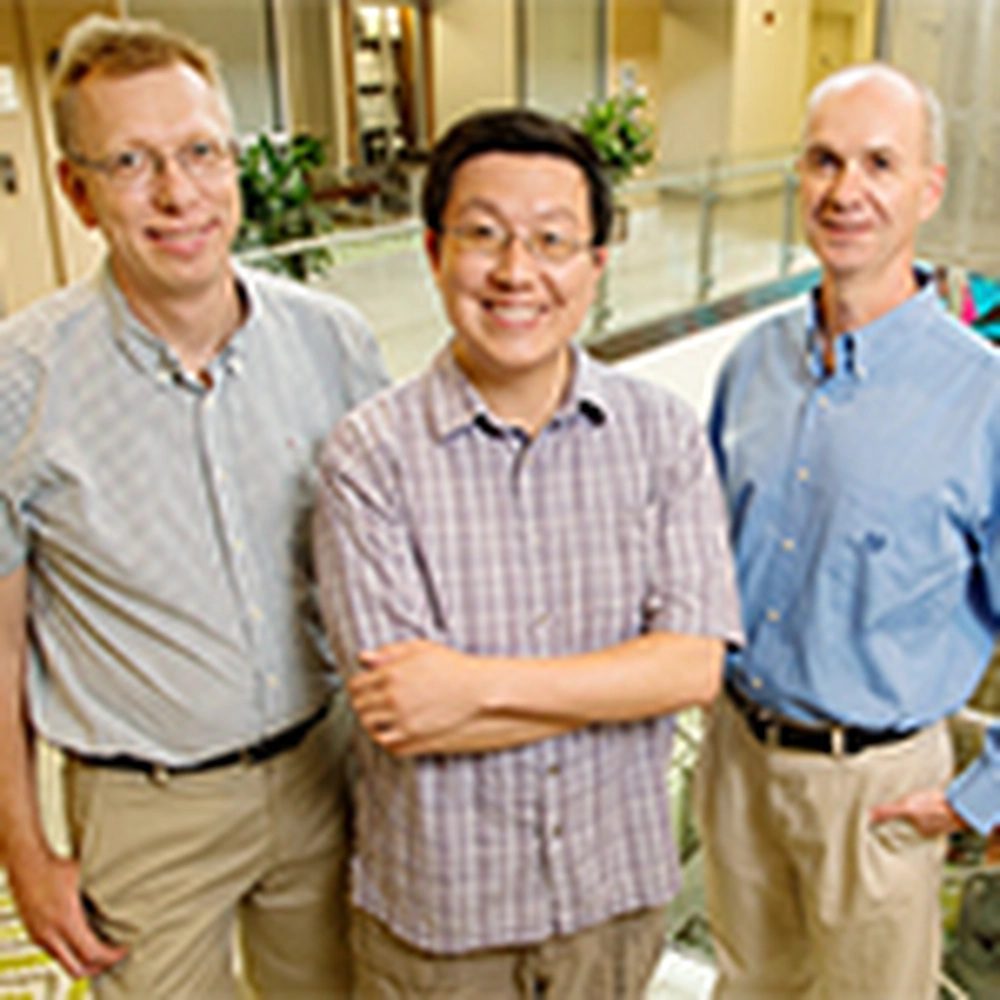
It took two postdoctoral researchers, a lab technician, four undergraduates and their faculty advisors only four years – a blink of an eye in pharmaceutical terms – to scour a collection of 10,000 bacterial strains and isolate the genes responsible for making 19 unique, previously unknown phosphonate natural products, researchers report. Each of these products is a potential new drug. One of them has already been identified as an antibiotic.
The researchers report their findings in the Proceedings of the National Academy of Sciences.
Phosphonates are an abundant and diverse class of natural signaling molecules that have already proved useful to medicine and agriculture, said University of Illinois microbiology professor William Metcalf, who led the research with U. of I. chemistry professor Wilfred van der Donk.
“We focused on phosphonates because we know they are strongly predisposed to have biological activity – antibiotic activity, antiviral activity, herbicidal activity,” Metcalf said. Bacteria use these compounds to signal their presence to their microbial neighbors, or, at higher concentrations, to kill them, he said.
Naturally produced phosphonates have great pharmaceutical potential, the researchers said.
“Of the 20 previously known natural-product phosphonates, two are used commercially – one as a clinical antibiotic and one as an herbicide – and another one is now in clinical trials to treat malaria,” van der Donk said. “This 15 percent drug-development success rate is much higher than the 0.1 percent average estimated for natural products as a whole.”
Postdoctoral researcher Kou-San Ju used a technique called “genome mining” to search the genomes of 10,000 strains of actinomycete bacteria for pepM, a single gene that is required for most types of phosphonate biosynthesis. Postdoctoral researcher Jiangtao Gao then worked with Ju to purify and structurally characterize the phosphonates.
“Genome mining has previously been used, but only with a few organisms at a time,” Ju said. “We wanted to know if this approach could actually be feasibly performed on a scale that is relevant to pharmaceutical discovery.”
The team identified 278 bacterial strains that had the pepM gene.
“If you have that gene, it means you’re making a phosphonate natural product,” Metcalf said.
The researchers then sequenced the full genomes of all 278 strains that had the gene. By examining the genes flanking pepM, the researchers could tell whether they were finding pathways to build new phosphonates or rediscovering old ones.
“In the old days, pharmaceutical companies would have done bioassays on extracts from all 10,000 species,” Metcalf said. They would purify the compounds of interest, determine their structure and then try to figure out whether they had found something new, he said.
“It was very, very tedious and very expensive,” he said. “That would have taken a large company with hundreds of people years, if not decades.”
The new effort has yielded many novel compounds.
“We have thus far isolated 19 new phosphonates, including those with antibiotic properties and others with previously unknown structures,” Ju said. “In other words, we have essentially doubled the inventory of phosphonate natural products identified to date.”
The 19 new structures are among 78 newly discovered groups of phosphonates produced from the 278 actinomycetes with the pepM gene. One of the 19, which the team named argolaphos, was found to be most potent against three types of bacteria that cause illness: Salmonella typhimurium, Escherichia coli and Staphylococcus aureus, the researchers report.
The researchers describe the new findings as a proof of concept that genome mining can be used on a scale that will speed the process of drug discovery, focusing on naturally produced compounds, which are among the most promising new drug leads.
“These biologically produced small molecules have been the source of, or inspiration for, nearly two-thirds of all human medicines, yet research in this area has dwindled in recent years due to, among other reasons, high costs and increasing rates of rediscovery,” the researchers wrote. Natural products also are a much-needed source of new antibiotics.
“To this day, natural products make up 75 percent of all of our antibiotics – either the natural products themselves or derivatives thereof,” van der Donk said.
“Our study shows that genome mining is not only a viable route to new natural products, but that there are a tremendous number of new compounds awaiting discovery from the genomes of microbial strains,” Ju said.
Metcalf and van der Donk are faculty in the Carl R. Woese Institute for Genomic Biology at Illinois, where Metcalf leads the mining microbial genomes research theme.
The National Institute of General Medical Sciences at the National Institutes of Health supported this research.
Excerpted from UIUC's News Bureau original article, author Diana Yates
University of Illinois chemistry professor Wilfred van der Donk (left), postdoctoral researcher Kou-San Ju, microbiology professor William Metcalf and their colleagues used genome mining to discover many new natural products quickly and inexpensively.
Photo by L. Brian Stauffer